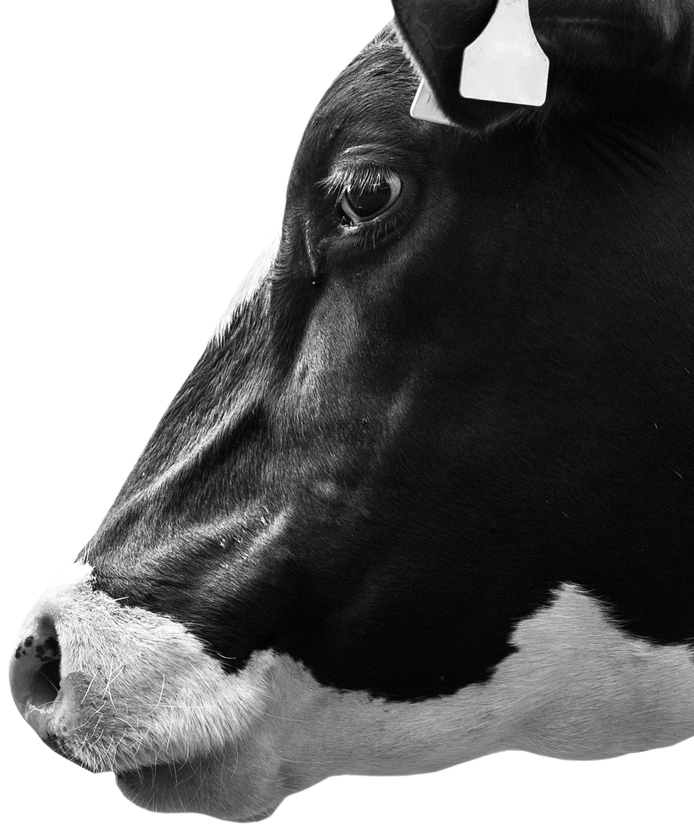Harper Adams University Future Farm, Newport, Shropshire.
Kate Robinson and her team manage the 400-cow Holstein herd, which is part of the University’s Future Farm. The dairy operates on 227 hectares and is run by five full-time staff.
Although the dairy unit is not a ‘typical’ farm, and is involved in research and teaching activities, it is expected to perform commercially and achieve exceptional industry-based standards, and also to demonstrate good practice.
The team of staff is a vital ingredient in helping to achieve this and efforts are made to create a good working environment. Priority is given to staff development, and to encouraging employees to attend industry events and training courses, such as AI and foot trimming.

HA Dairy team lef to Right - Chris Ruffley, Farm Crops and Operations Sector Manager, Kate Robinson, Ruminant Sector Manager, Alice Sault, Deputy Sector Manager
The all-year-round calving herd is fully housed and fed a TMR. Cows are milked through a 40-point internal rotary parlour, three times a day. During the past two years improvements have been made to the facility, such as milk-rite clusters and wash plates, new variable pumps, a back flush, and parlour fans.
The University has also invested in cow housing, adding fans, automatic scrapers, cow brushes and an automatic footbath.
The herd’s breeding plans were revised in 2018, moving away from a production-based strategy and towards health and longevity. The aim was to improve lifespan and reduce the herd’s replacement rate, and to breed a more efficient cow.
“Improving health and fertility traits, while maintaining production, helps to reduce the unit’s environmental impact and gives us a robust cow that meets our performance targets and also copes with the educational and research requirements imposed on them,” says Kate, who has managed the ruminant section since 2022.
Sexed dairy semen is used on the top 30% of cows and about 70% of cows are bred to beef semen, using an easy calving British Blue sire, beef shorthorn and sexed Angus. Youngstock are bred to an Aberdeen Angus sire.
With a target to achieve net zero across the University’s Future Farm by 2030, the focus is moving to improve grassland management and forage and a move to breed a more grazing type cow, with sexed Montbeliarde and Viking Red semen, has been used on a small proportion of the herd. Comparisons of health, fertility and production between the breeds will be made.
Calves are reared on the farm and most beef calves are kept through to finishing on the beef unit. Calf mortality is low, with a 1.96% mortality rate in heifers from birth to first calving.
Herd health is geared to preventative measures. Working with their vet, the team reviews all the data and develops and updates health plans. Although cases of mastitis are rare, bacteriology tests are used to determine the cause and prescribe the most suitable treatment.
A Johne’s-disease control plan has been in place for 10 years, which uses quarterly testing through NMR’s HerdWise scheme. Great progress has been made with 96% of the herd classified as ‘green’.
Cows with any symptoms throughout the year are also blood sampled to ensure infected cattle are managed appropriately and exit the herd.
Youngstock are vaccinated for ringworm, pneumonia, BVD, Leptospirosis and IBR.
Regular parlour dynamic tests are carried out and the cow’s environment is monitored so that any disease and infection risks can be mitigated. New mattresses have been added to cubicles during the past two years, and beds are cleaned and bedded with sawdust during each milking to help optimise udder health.
Cow mobility is scored monthly by an independent scorer and a HerdVision camera monitors lameness and body condition. These results are recorded on the Uniform dairy management system.
The herd is monitored daily through Cow Manager ear tags for oestrus, rumination, activity, lying times and animal temperature. And there are also sensors in the buildings monitoring heat stress levels.
As part of the routine, cows walk through an automatic footbath three times a day after milking. Lame cows and routine trims, including dry cows, come under the scrutiny of an independent foot trimmer with several farm staff trained to carry out any emergency treatments.
“The unit is focusing on excellent cow health and performance, starting with breeding the right cow for the system and then managing her so she achieves her potential,” says Kate.
“This supports our drive towards net zero and the unit’s efficiency. But we can only achieve this with good staff, so it’s important conditions are also right for our team.”
Key facts: (September 2024)
- Herd size – 400 cows and 195 followers
- Milk yield: 12,248kg at 3.85% fat 3.19% protein
- Milk from forage: 3,864 litres or 34%
- Pregnancy rate: 23% cows; 45% heifers
- Somatic cell count: 123,000 cells/ml
- Mastitis rate: 12 cases per 100 cows per year
- Calving interval: 398 days
- Age at first calving: 23.7 months
- Milk buyer: Müller – (Morrisons contract)
